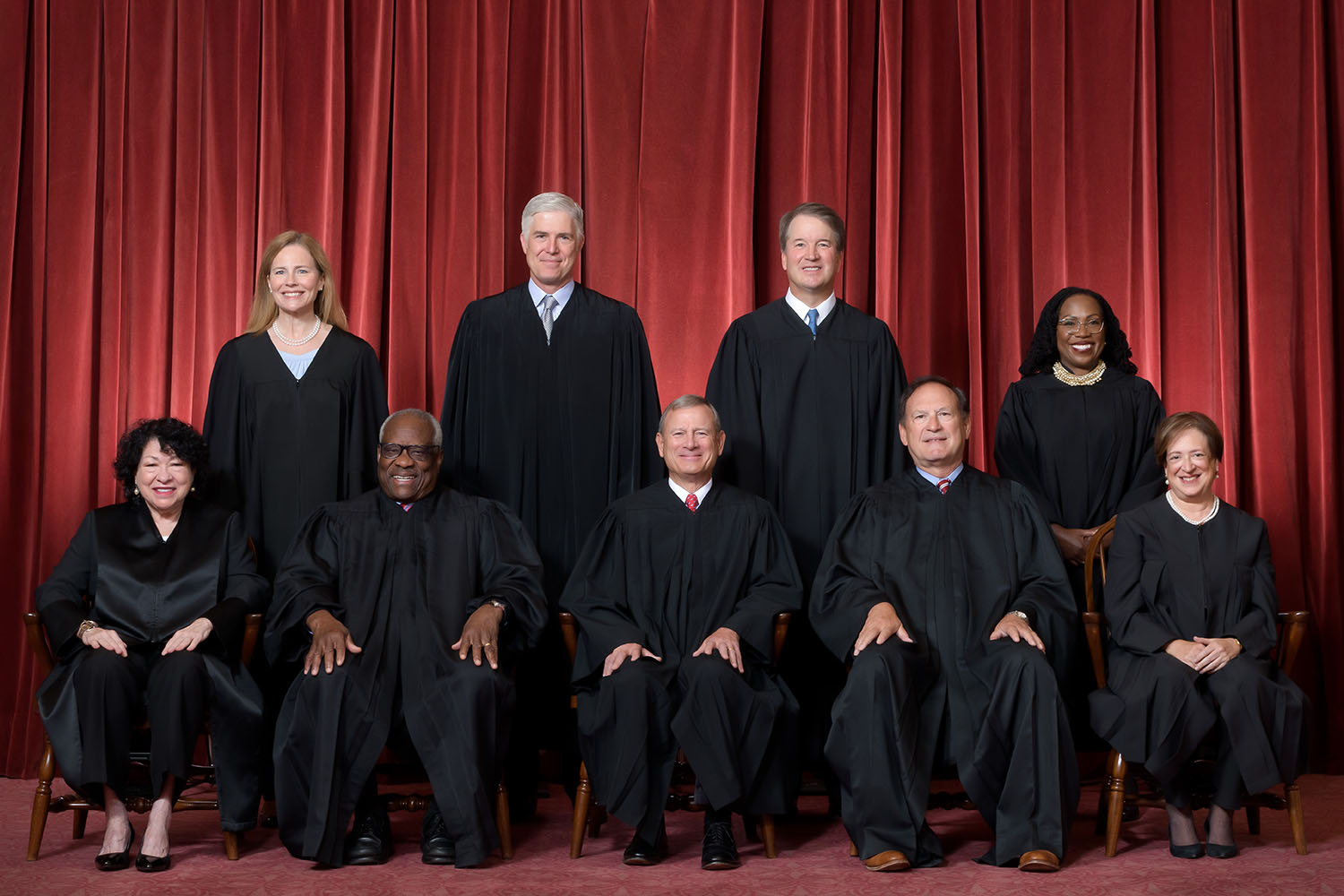The games people play…
Consider the following, a plaintiff comes to the district court with a challenge and a request for a summary judgment. The court looks at the filings by the plaintiff, agrees the plaintiff is in the right. The court grants the summary judgment.
At that instant, the defendants will appeal to the circuit court. They will request an administrative stay pending the court deciding if a stay pending appeal is warranted.
The administrative stay is supposed to be very short.
In one of the cases coming out of the D.C. District Court, the inferior court granted a temporary stay on a government action. The TRO then granted the plaintiff the relief they wanted as final judgment. The government appealed to the D.C. Circuit court, which said, “You can’t appeal a TRO, even if it is acting like a preliminary injunction or summary judgment.” The government then appealed to the Supreme Court.
The appeal was presented to Chief Justice Roberts, who granted an administrative stay. This required almost no argument, the papers filed by the petitioner were enough. When SCOTUS heard the petition for a stay of the TRO, the Court denied the stay because the TRO had already expired, and thus the petition was moot.
If the appeals court denies the stay, the defendant can then appeal to the Supreme Court for a stay pending the outcome of the case.
The point of all of this is that a summary judgment can be appealed up to the Supreme Court.
A Temporary Restraining Order is a temporary injunction. It is supposed to pause actions until a hearing for a preliminary injunction is heard.
Since it is such a short-term instrument, it is not (normally) appealable.
These inferior court judges are granting TRO’s against the government that act more like preliminary injunctions than TRO’s.
Winter Factors
The Supreme Court, in the Winter opinion, gave clear guidance on when an injunction or stay should/can be issued. These are known as the “Winter Factors”.
The first factor is the likelihood of success on the merits. That is to say, is the party requesting the stay or injunction likely to prevail on the merits of the case?
For example, if you are requesting an injunction on the IRS freezing your assets, you have to have a strong enough argument that you will win before the court will consider your request. Since it is unlikely you will win, no injunction will issue.
This is the place where most Second Amendment challenges loose. The courts will determine that the plaintiffs (good guys) are unlikely to succeed on the merits, and will thus not grant the injunction.
The second factor is irreparable harm.
In general, if the party were to prevail with no stay or injunction, could they be made whole with a payment of money?
Any suit involving money is very unlikely to create irreparable harm.
For example, if you are fired, and you sue for wrongful termination, your loses can be made whole with payment for your lost wages. The courts do not consider secondary problems, only the primary. So if you were to lose your house because you defaulted on your mortgage, you might not get enough money to recover from that lose.
The third winter factor is Balance of Equities. This is designed to balance harm. If the injunction is granted, one party will be harmed. If the injunction is denied, the other party will be harmed. If granting the injunction would delay some “good thing” to the harmed party, but denying the injunction would cause somebody to lose their home, the balance of equities swings to granting the injunction.
The fourth factor is Public Interest. Is granting the stay or injunction in the best interest of the public?
When any court disregards the winter factors, they are going rogue.
In Second Amendment cases, the courts would often say that the infringement was “in the best interest of the public” and deny relief to the Second Amendment plaintiffs. They would do this, even if the other factors would lead to granting the stay or injunction.
The Supreme Court has emphasized that a denial of a Constitutionally protected right is irreparable harm, that the balance of equities always tilts to those being denied their Constitutionally protected right, and that the public has no interest in enforcing unconstitutional regulations.
Winter v. public interest
The opinions issued by these rogue inferior judges often discard the winter factors. This is something that could and should be appealed. But a TRO cannot be appealed.
This means that these rogue judges are doing their best to make these TRO’s as broad as possible and to last as long as possible to stop the administration’s policies from being effected.
Judge Shopping
There are almost 100 federal district courts with 677 judgeships, with a few more senior judges thrown in.
A senior judge is a judge who is no longer in the lottery but still hears cases. I.e. A judge who is very near retirement.
If you want to file a suit against a gun company, you can do no better than filing your case in the District Court of Massachusetts. They haven’t found an infringement they didn’t approve of.
There is no combination of judges in the First Circuit court who would agree that any law was an infringement of the Second Amendment. They are so anti-gun that I don’t believe there is a single case where they found for The People in a Second Amendment Challenge.
The attitude of the Supreme Court has varied. Unfortunately, it takes a very long time for a case to make its way to the Supreme Court.
These bad actors are intentionally searching out judges that they expect will go rogue. There also appears to be a thumb on the lottery system used to pick judges for cases.
Oh, when a case is filed, the judge assigned is picked at random via a lottery. A plaintiff can request that a case be assigned to a particular judge, if the plaintiffs believe that their case is similar to other cases the judge is or has handled.
This is why one judge in the Southern District of New York got so many of the product liability cases against drug manufacturers. He’s the guy who decided that even if a person couldn’t prove which company manufactured the medication, he would portion out the penalty based on the market share of the different manufacturers.
Consider a judge who found that the distillery was liable for crashes where the driver was drunk. He has 1000s of plaintiffs demanding money from the distillery.
The problem is which distillery is at fault for a particular crash. The guys drinking rum and coke, which brand of rum did they drink? It is unlikely they know.
So instead of forcing the plaintiffs to point to a particular “guilty” distillery, the judge looks at the market share of each distillery. If the penalty is $1,000,000 then the distillery with 50% of the market share of that class of product is responsible for $500,000 of the penalty.
The little distillery, that is producing Don’t Drive Vodka, is so small they only account for 0.1% of the market share of vodka. They would be responsible for $1,000 of the $1,000,000 penalty.
But what if 90% of the drivers that are drunk were drinking “Don’t Drive Vodka”? Wouldn’t that mean they should pay more of the penalty? Yes, it does mean that, but it’s not what this judge did. It was all about market share.
California in Massachusetts?
Why would the lead plaintiff, California, be opening a case in Massachusetts?
Because they know that it is an almost certainty that they will get a judge with TDS.
On March 10, 2025, the United States District Court for the District of Massachusetts
issued what it styled as a temporary restraining order (TRO) enjoining the Government from terminating various education-related grants. The order also requires the Government to pay out past-due grant obligations and to continue paying obligations as they accrue. The District Court’s conclusion rested on a finding that respondents are likely to succeed on the merits of their claims under the Administrative Procedure Act (APA), 60 Stat. 237. On March 26, the Government filed this application to vacate the District Court’s March 10 order (as extended on March 24) and requested an immediate administrative stay. The application was presented to JUSTICE JACKSON and by her referred to the Court.
Although the Courts of Appeals generally lack appellate jurisdiction over appeals from TROs, several factors counsel in favor of construing the District Court’s order as an appealable preliminary injunction. Among other considerations, the District Court’s order carries many of the hallmarks of a preliminary injunction. See Sampson v. Murray, 415 U. S. 61, 87 (1974); Abbott v. Perez, 585 U. S. 579, 594 (2018). Moreover, the District Court’s “basis for issuing the order [is] strongly challenged,” as the Government is likely to succeed in showing the District Court lacked jurisdiction to order the payment of money under the APA. Sampson, 415 U. S., at 87. The APA’s waiver of sovereign immunity does not apply “if any other statute that grants consent to suit expressly or impliedly forbids the relief which is sought.” 5 U.S.C. §702. Nor does the waiver apply to claims seeking “money damages.” Ibid. True, a district court’s jurisdiction “is not barred by the possibility” that an order setting aside an agency’s action may result in the disbursement of funds. Bowen v. Massachusetts, 487 U. S. 879, 910 (1988). But, as we have recognized, the APA’s limited waiver of immunity does not extend to orders “to enforce a contractual obligation to pay money” along the lines of what the District Court ordered here. Great-West Life & Annuity Ins. Co. v. Knudson, 534 U. S. 204, 212 (2002). Instead, the Tucker Act grants the Court of Federal Claims jurisdiction over suits based on “any express or implied contract with the United States.” 28 U.S.C. §1491(a)(1).
— Department of Education v. California 604 U.S. ___ (2025)
The five Justices that wrote the unsigned opinion obviously thought the rogue, inferior judge, was playing games.
The Chief Justice couldn’t bother to write why he dissented, but he did.
Justice Kagan claims her dissent was because the government didn’t argue that what they did was legal. She entirely ignores the government’s merits argument, that the district court didn’t have jurisdiction, instead focusing on “irreparable harm” that involved money.
Justice Jackson spent 15 pages on her dissent, with Sotomayor joining. Jackson also ignores the majority’s view that the government was likely to prevail on the merits, no jurisdiction, instead focusing on the inferior court thinking that the government’s termination of grants was somehow illegal.
She argues that the TRO would be moot in a few days, so this wasn’t the right time to take up the issue.
And finally, she thinks the government has to provide “meaningful explanation” of the cancellation of these grants.
I still think she is a clown.
Conclusion
This is a win for the Trump administration. It is the Supreme Court taking a stand. They are calling this particular judge on these preliminary injunctions wrapped in the verbiage of a TRO.
More importantly, that part where they say, …the Government is likely to succeed in showing the District Court lacked jurisdiction to order the payment of money under the APA
&mdash, Ibid, that is a warning to the inferior courts that they need to reconsider if they have jurisdiction in these cases.
The Supreme Court speaks in code. Lawyers understand the code. Courts understand the code. Those that follow the Supreme Court will often figure out the code. Leftist refuse to acknowledge the code.
Rogue courts insist that the code means something different. All that you need to do to understand this is to watch a court twist one footnote into the most important part of Bruen while ignoring the thousands of words that refute the footnote.






